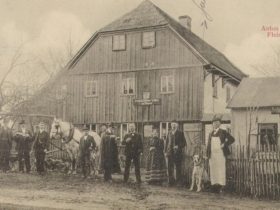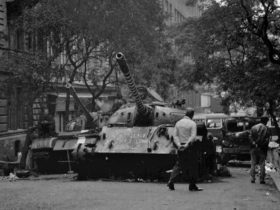The First Republic (1918-1938): A period of cultural and intellectual growth, marked by the works of writers like Karel Čapek and the development of the Czech avant-garde.
The period between World War I and World War II in the Czech Republic, known as the First Republic, was a time of immense cultural and intellectual growth. This era marked a departure from the traditionalism of the Austro-Hungarian Empire and saw the emergence of a new, modern Czech identity. In this period, the country witnessed a flourishing of art, literature, and intellectual thought that remains significant today.
One of the most prominent figures of this period was Karel Čapek, a renowned writer and journalist best known for coining the term “robot.” Čapek’s works, including the science fiction play “R.U.R” and the satirical novel “The War with the Newts,” explored technology, progress, and social critique themes. His writing captured the essence of the Czech avant-garde movement, which sought to break away from traditional forms of art and literature and embrace new, experimental approaches.
The Czech avant-garde movement emerged in the 1920s and was characterized by rejecting established norms and focusing on exploring form and language. It was a time of experimentation and innovation in art, music, and literature. The movement was marked by artists like the painter and sculptor Josef Čapek, Karel Čapek’s brother, who was an essential contributor to the development of modern art in the Czech Republic. Josef Čapek was a versatile artist, working in various mediums, including painting, sculpture, and book design. His works were characterized by their whimsical and playful nature, and they often featured elements of folk art and traditional Czech motifs.
Another prominent figure in the Czech avant-garde movement was the artist Toyen, a member of the avant-garde group Devětsil. Toyen was known for her surrealist paintings and collages, which explored themes of sexuality, gender, and the subconscious. Her works were radical for their time and remain influential today.
The First Republic was also a period of significant development in Czech architecture, focusing on functionalism and modern materials like concrete and steel. This led to the emergence of a new style of architecture that was simple, functional, and focused on the needs of the people. Architects like Jan Kotěra, Josef Gočár, and Pavel Janák were instrumental in the development of this style, and their works can still be seen in cities like Prague and Brno.
The First Republic was a time of immense cultural and intellectual growth in the Czech Republic. It was marked by a rejection of traditional forms of art and literature and the emergence of new, experimental approaches. The works of writers like Karel Čapek and the artists of the Czech avant-garde movement continue to be studied and celebrated today, and their influence can be seen in the modern Czech cultural landscape.









